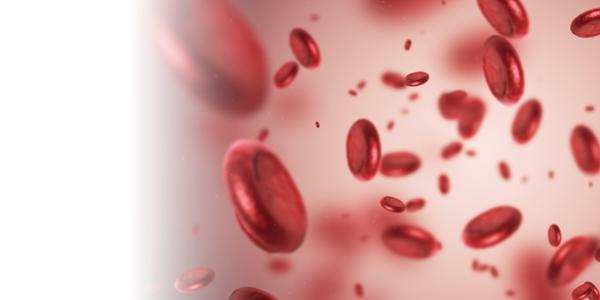
It is often a mild or temporary condition, but some types of anemia are long-term and severe. It’s also the most common blood disorder in the U.S., and affects more than 3 million people at any given time.
The role of red blood cells is to transport oxygen throughout your body. Hemoglobin, an iron-rich protein that red blood cells carry, attaches to oxygen in the lungs and then carries that oxygen to tissues in the body. When tissues don’t get enough of that oxygen, the body is left weak and tired. Symptoms include fatigue, shortness of breath, weakness, and headache. But because these signs can be easily dismissed, many people don’t know they have anemia until a routine blood test reveals it. And while anemia can affect anybody, it is most common in women who are pregnant or menstruating, people with chronic medical conditions such as autoimmune disorders or cancer, or those with a poor diet – making it even more likely that the signs of anemia may be overlooked.
There are several types of anemia, and treatment for each can vary.
Iron-deficiency anemia is the most common type of anemia. It’s caused by a shortage of iron in your body. This generally occurs as a result of blood loss (often in menstruating women or those with an ulcer) or, but may also be due to poor absorption of iron. Absorption issues are common in people who have had gastric bypass surgery for weight loss. Treatment generally includes iron supplements.
Vitamin deficiency anemia results when your body lacks the necessary folate and vitamin B-12 to produce enough healthy red blood cells. This can usually be treated with dietary changes. In rare cases, the body isn’t able to process vitamin B-12, which can lead to pernicious anemia. This is a potentially serious condition, but can generally be treated with B-12 supplements.
Aplastic anemia is rare, and results when the bone marrow stops making enough blood cells. Infections, certain medications, and exposure to toxic chemicals can cause this. Mild cases may not require treatment, but severe cases can be fatal without immediate medical care.
Sickle cell anemia is an inherited disease that’s present at birth, although symptoms often don’t present until several months later. People with this type of anemia produce abnormal hemoglobin, which causes the red blood cells to take on a crescent (or sickle) shape that impedes blood flow through the vessels. This condition will worsen over time, and requires ongoing medical care to help manage it and prevent complications.
Other types of anemia can be caused by kidney, liver or other diseases, or by mechanical failures such as leaky heart valves. And while a good diet that includes plenty of vitamin-rich food can help you avoid some types of anemia, other types can’t be prevented. If you suffer from a chronic health condition, have a family history of anemia, are pregnant or over age 65, you should always discuss unusual fatigue or weakness with your doctor. Remember that many types of anemia can be easily treated, but some can be life-threatening and should never be ignored.
This article first appeared in the September 2018 edition of the HealthPerks newsletter.

